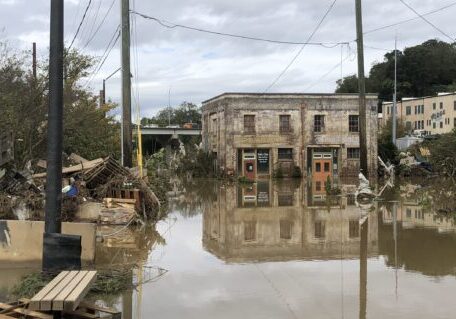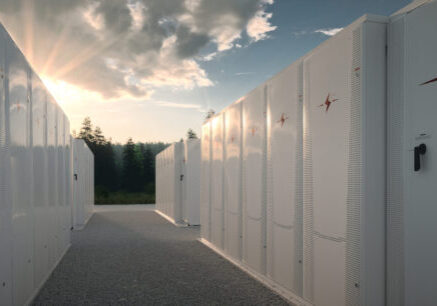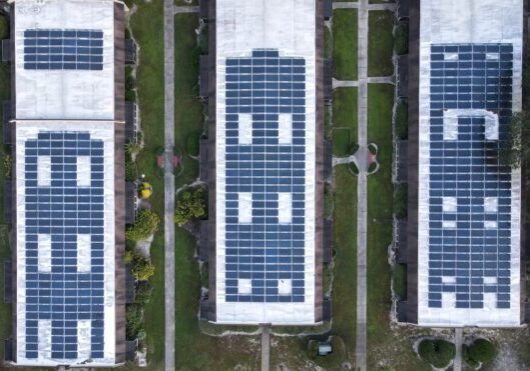October 19, 2020
Battery Storage is Coming to Affordable Housing Thanks to Efficiency Program
By Seth Mullendore, Christina McPike
Developing affordable housing is challenging, and incorporating energy efficiency and renewables into affordable housing development is even more challenging. Nevertheless, some affordable housing providers have continually been at the forefront of advancements in the clean energy space, improving the energy efficiency of their properties and, increasingly, incorporating solar PV and other clean energy technologies
But, to-date, few have found success in adopting energy storage to cut costs and increase energy resilience. Now, a new utility program in Massachusetts has dramatically changed the economic landscape for battery storage in the state and created a pathway to deliver the benefits of storage to affordable housing providers and residents.
In 2019, Massachusetts became the first state in the nation to establish a program within its energy efficiency plan for customer-sited, behind-the-meter battery storage. The Commonwealth had already recognized peak demand reduction as a valuable new form of energy efficiency; now, with analysis and technical support from Clean Energy Group, an incentive program has been developed to support customer batteries as a demand-reducing efficiency measure. The program, called ConnectedSolutions, provides payments to customer-owned battery storage systems that discharge when called upon by utilities to help manage energy demand on the grid. This new value stream for storage is a game-changer for behind-the-meter batteries, providing a reliable source of revenue backed by contractual utility payments.
The ConnectedSolutions program represents a big opportunity for utility customers across the state, but it is particularly important for customers like affordable housing providers. Here’s why: prior to ConnectedSolutions, the main economic driver for battery storage in Massachusetts was demand charge management, where customers use batteries to shave their peak loads and thereby reduce demand-related utility charges. Commercial customers in parts of the state served by Eversource are subject to some of the highest demand charges in the country, creating a small market for battery storage in Massachusetts. Unfortunately, demand charge management only works well for customers with predictable and dramatic peaks in energy demand, such as industrial customers operating energy-intensive equipment, who are also paying high demand rates. Multifamily housing typically does not have such large spikes in electricity demand, and therefore, it’s hard to economically install battery storage at these kinds of facilities, even those that may be paying high demand charge rates.
For several years, Clean Energy Group has been working with affordable housing developers in the Greater Boston area, helping them to assess the economic feasibility of solar paired with storage at their properties. Again and again, we found that, while the economic case was often promising, affordable housing properties just didn’t have the types of spiky demand profiles that make for a strong financial case to install battery storage, especially not for the large battery systems needed to deliver significant backup power during emergencies. And properties outside Eversource service territory had an even tougher time making the economics of storage work without grants or other incentives, due to lower demand charge rates.
ConnectedSolutions has changed all that. Now, the customer’s pattern of electricity use doesn’t matter, and their demand charge rate is irrelevant. Customers simply sign a contract with their utility, and receive payments based on their battery’s response to a utility signal. ConnectedSolutions allows all customers to economically install battery storage, and it guarantees that these behind-the-meter batteries are used to benefit the entire grid, generating cost savings for all ratepayers. As more customers sign up for the program, the shift from site-specific to systemwide peak demand reduction could transform thousands of residential and commercial electricity customers into a flexible, grid-responsive energy asset, providing grid-scale services currently being met—at great cost—by fossil-fueled assets, such as peaker power plants.
Not only does the ConnectedSolutions program allow broader access to energy storage and produce broader benefits, it also provides higher returns to host facilities. New analysis by Clean Energy Group shows that for six multifamily affordable housing facilities analyzed in Massachusetts, switching from demand charge management to ConnectedSolutions would improve internal rates of return for solar+storage systems by about 30 percent on average. Based on our economic analysis, these and many other customers can expect to pay off their storage investment well within the lifespan of the equipment. ConnectedSolutions also encourages larger batteries due to its pay-for-performance structure, meaning host facilities purposing batteries for backup power get greater resilience benefits during grid outages. And because ConnectedSolutions guarantees payments through utility contracts, it provides more predictable economic returns for battery owners, effectively de-risking energy storage investments.
Clean Energy Group is now helping affordable housing developers to revisit projects that didn’t quite pencil out under the demand charge management model and seeing dramatic improvements in project payback periods under ConnectedSolutions. There’s also been an influx of interest from new affordable housing providers across the state, reflecting the fact that ConnectedSolutions opens battery storage development to all types of customers regardless of the shape of their electricity demand curve or utility rate structure. This “democratization” benefit has not only transformed the storage market in Massachusetts, but it has expanded it to include all customers of the major utilities, residential as well as commercial.
One company looking to take advantage of the new landscape for battery storage is WinnCompanies, the largest manager of affordable housing in the United States. With support from Clean Energy Group, Winn is currently assessing battery storage project opportunities for several properties across Massachusetts. Winn sees battery storage not only as a way to lower the operating cost of the properties it is managing, but also as a clean, reliable solution to deliver benefits to residents by powering essential services during grid outages. Winn has developed more than two megawatts of solar PV over the past decade, but it took significant cost compression, incentives, tax credits, and commitment to get the solar market where it is today. WinnCompanies hopes the same will be true for batteries, recognizing that early adopters and demonstration projects are key to overcoming a steep learning curve and high first costs.
For owners and operators like Winn, ConnectedSolutions offers a greater and more stable source of revenue for battery storage, lowering their investment risk. Because the benefits are guaranteed through utility contracts and backed by state energy efficiency funds, ConnectedSolutions removes the guesswork involved in predicting onsite peak demand levels. Instead, payments are generated by responding to utility signals. This replaces the uncertainty of demand charge management with the predictability of multi-year utility contracts, meaning that battery storage projects are able to access more favorable financing terms.
Clean Energy Group is working with numerous housing providers that, like Winn, plan to move projects forward in the near term thanks to ConnectedSolutions. As the ConnectedSolutions model is replicated in other states, as is already happening throughout the Northeast, more affordable housing properties and community facilities will have a chance to fully participate in the clean energy transition.
Clean Energy Group and WinnCompanies will be participating in a webinar on October 20th along with other presenters to discuss emerging opportunities for battery storage development in affordable housing and other facilities in unserved communities. To learn more about the free webinar and register for the event, go to Financing Resilient Power in Underserved Communities: Moving Forward with Distributed Solar+Storage Projects.














